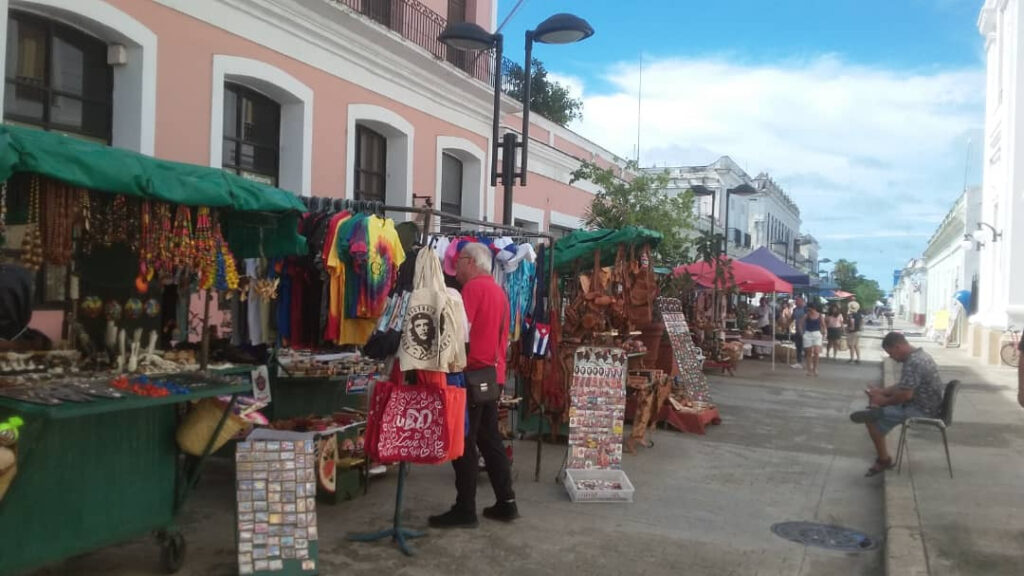
14ymedio, Julio César Contreras, Cienfuegos, July 7, 2024 — Cienfuegos was never a tourist enclave of great importance like Havana or Varadero, but its architectural charm, more republican than colonial, attracted those looking for city tourism but without the bustle of the capital. In recent years, however, the number of travelers passing through the Pearl of the South has fallen, and, at least since the COVID-19 pandemic, the businesses that depended on that movement are fewer and poorer. A few meters from the city’s boulevard, next to José Martí Park, the artisans of the Cultural Heritage Fund have a space dedicated to the sale of their products. From wooden sculptures to textiles and costume jewelry, the stalls that offer handmade merchandise have been losing their prosperity.
María Luisa, an artisan who manages one of the tables, has witnessed the debacle. “Sales have been greatly affected. Just a few years ago, up to ten buses with tourists stopped here every day, and, although almost everything we sell is for them, from time to time some Cuban would come here to shop too,” she tells 14ymedio.
“Then we could even have the luxury of giving discounts, because we had enough profit to live on,” recalls the 43-year-old cienfueguera, who sells all kinds of memorabilia that can attract interest from abroad: paintings by Compay Segundo, maracas adorned with Cuban flags, cow bone necklaces and Che magnets.

In the current situation, María Luisa explains, the prices of raw materials have risen so much that “it is not only difficult to get them, but also to make a living from handicrafts… If before those who did better had enough to hire a seller, now it is the artisans themselves who sell the products. Between investments, taxes and paying for table space, many hav


